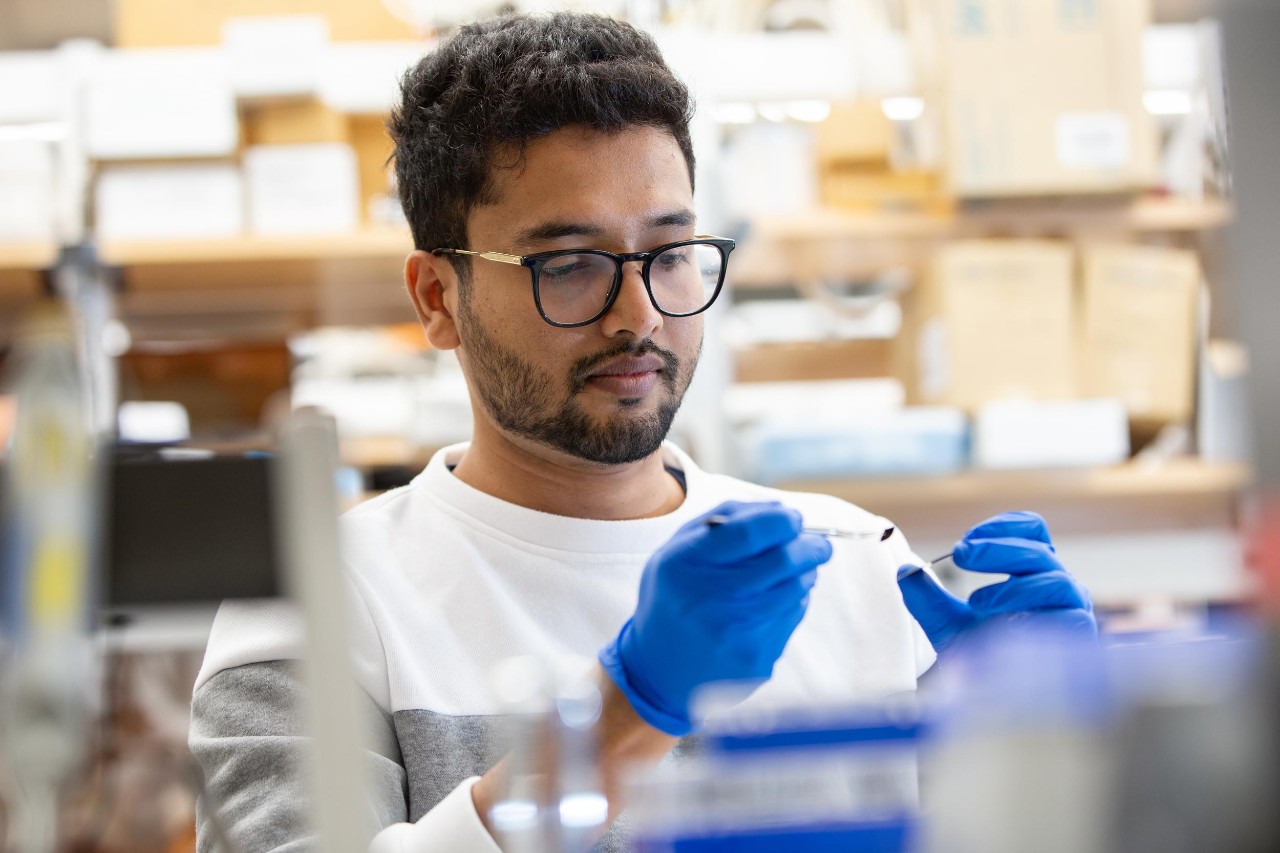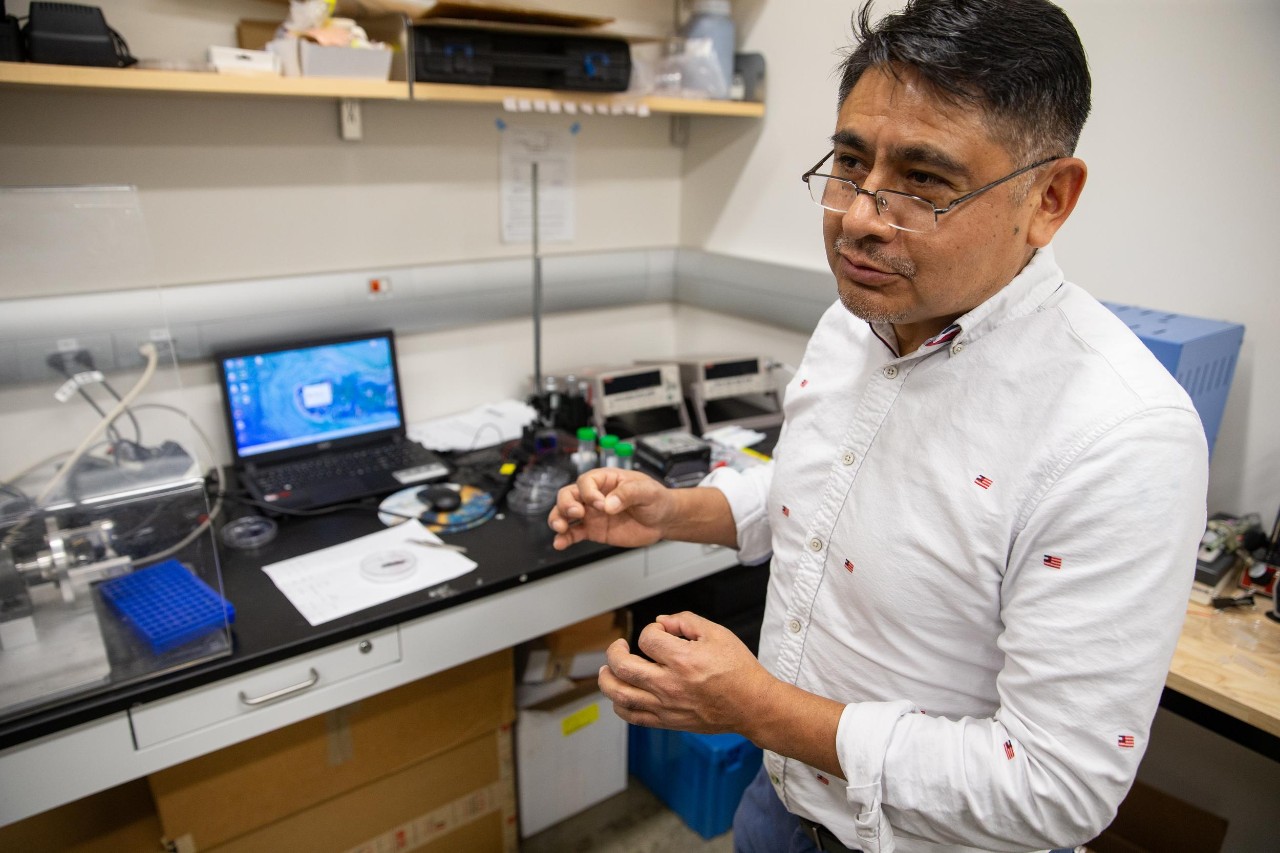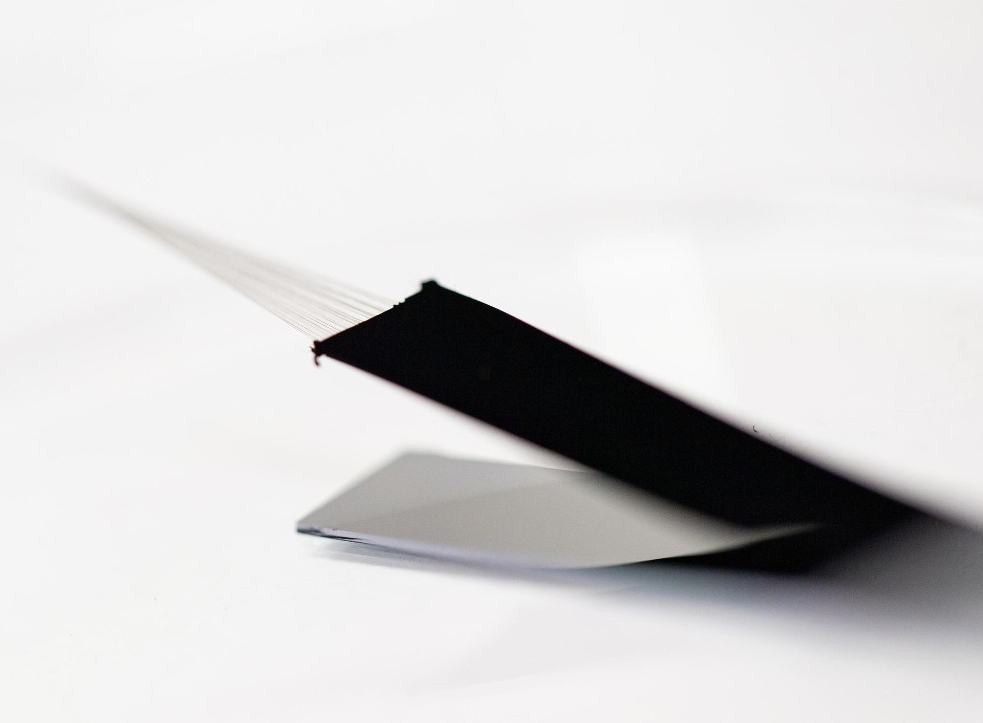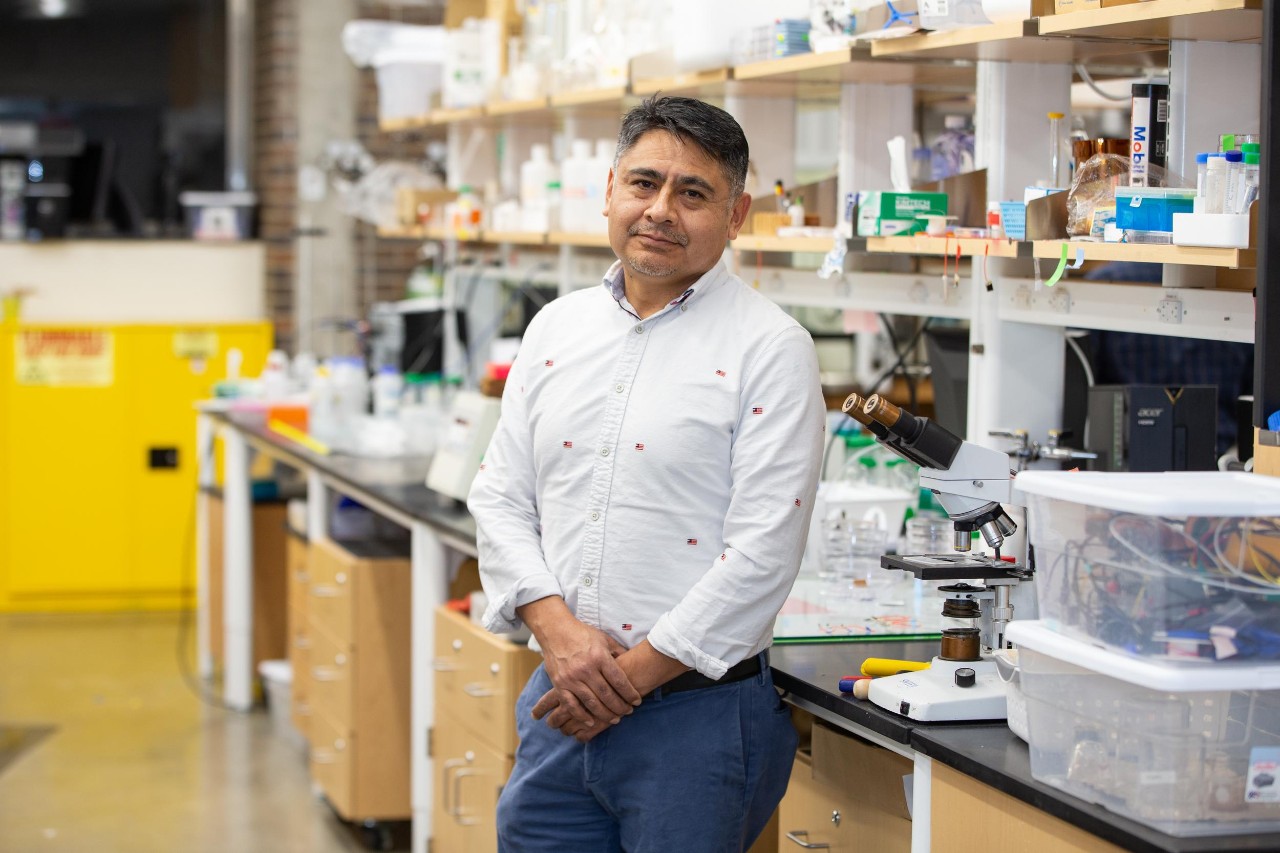
UC discovers way to bind nanotubes to metals
Chemical process offers potential applications like 'space elevators'
Carbon nanotubes have shown promise for everything from microelectronics to aviation to energy storage.
Researchers think this material might one day fulfill the science fiction dream of creating an elevator to space.
So why aren’t they used more often?
University of Cincinnati chemist Noe Alvarez said one obstacle has been the frustrating inability to link carbon nanotubes to metal surfaces in a robust connection for sensors, transistors and other uses. These hollow tubes have a diameter of just a billionth of a meter but can be many centimeters long.
“We want our experiments to be reproducible and consistent, but that’s not easily possible with nanotubes because we can’t control how well they’re connected to metal surfaces,” he said.
But he and his collaborators have demonstrated a new chemical process that grafts nanotubes to metal surfaces to create a strong, consistent, conductive link. The study was published in the journal Nanoscale Advances.

UC Associate Professor Noe Alvarez is studying the properties of carbon nanotubes in his chemistry lab. Photo/Andrew Higley/UC Marketing + Brand
In past iterations, carbon nanotubes were dispersed in a solution to make what Alvarez likens to “wet spaghetti” that sticks to a metal surface.
“But there is no robust connection. Nothing is really holding the nanotubes to the surface,” he said.
So measurements of properties such as electrical conductivity were imprecise and inconsistent.
Why don’t we see carbon nanotubes in widespread commercial applications even though they have so much potential? We have a lot to figure out.
Chaminda Nawarathne, UC chemistry student
Alvarez and his research partners at Texas A&M University, led by chemical engineering Professor Jorge Seminario, demonstrated ways to bond nanotubes chemically to copper, aluminum, gold and other metal surfaces.
Alvarez and his collaborators received a $720,000 grant from the National Science Foundation to elaborate on their chemical discovery in the next three years.
“Why don’t we see carbon nanotubes in widespread commercial applications even though they have so much potential? We have a lot to figure out,” UC doctoral student and study lead author Chaminda Nawarathne said.
Alvarez and his co-authors discovered through computational calculations that carbon atoms in the organic link actually bond with two copper atoms, creating an especially strong bond.
“That explains why our nanotubes once they’re chemically connected stay connected,” Alvarez said.

Carbon nanotubes are used to create the blackest synthetic material on Earth, absorbing more than 99% of all light. Nanotube fibers are strong and lightweight. Photo/Andrew Higley/UC Marketing + Brand
Carbon nanotubes are notoriously strong molecules, Alvarez said. Their molecular structure creates an elegant hexagonal lattice.
“Carbon bonds are the strongest bonds. They’re covalent bonds. That’s why diamond is the hardest material because they are carbon-carbon bonds,” Alvarez said.
While carbon atoms in diamonds are single bonds, carbon nanotubes have conjugated double-bonded atoms, making them even stronger than diamonds, Alvarez said.
Cables made from strong but lightweight carbon nanotubes have been envisioned for creating “space elevators” that could ferry equipment into orbit, Alvarez said.
A space elevator was depicted in the opening scene of the Brad Pitt movie “Ad Astra.”
But strength is just one of their unique properties.
Carbon nanotubes are used to create the blackest synthetic material on Earth. Alvarez said their strong bonds with metal could lead to better paints and coatings.
“Nanotubes are fairly inert. They’re very stable. You can conjugate them without breaking their bonds. Semiconducting nanotubes also have fluorescence properties — they can generate light,” Alvarez said. “So the list of applications goes on and on.”
Nawarathne said he is pursuing potential applications in energy storage.
“Now that we can bond the carbon nanotubes to a current collector or metal probe, we can make very stable electrodes for supercapacitors,” Nawarathne said.
UC chemistry students “grow” nanotubes on silicon disks using a process called catalytic chemical vapor deposition in equipment that heats reagents and an iron catalyst to 1,450 degrees Fahrenheit.
“It’s red-hot,” Alvarez said, pointing to an object visible through a glass window in the oven-sized machine. “That’s like a baking pan. The catalyst goes in here.”
After 45 minutes, a thin layer of carbon nanotubes appears on the silicon. From there, researchers were able to electrograft the nanotubes onto a variety of metal surfaces. Initially, they used bundles of nanotubes but with refined processes learned they can connect vertically aligned nanotubes.
“It’s like trying to connect wool back to a sheep. You have yarn that has been sheared from the sheep. We’re able to connect individual fibers back to the sheep chemically,” he said.
Featured image at top: UC doctoral student Chaminda Nawarathne works with carbon nanotubes in a chemistry lab. He was lead author of a paper explaining a new chemical method to connect carbon nanotubes to metals. Photo/Andrew Higley/UC Marketing + Brand

UC Associate Professor Noe Alvarez studies nanomaterials and their applications in his chemistry lab. Among his research projects are developing sensitive sensors to detect lead in drinking water. Photo/Andrew Higley/UC Marketing + Brand
Impact Lives Here
The University of Cincinnati is leading public urban universities into a new era of innovation and impact. Our faculty, staff and students are saving lives, changing outcomes and bending the future in our city's direction. Next Lives Here.
Related Stories
New UC method worth its salt
July 22, 2022
A chemist at the University of Cincinnati has come up with a novel way to study the thermodynamic properties of molten salt, which is used in many nuclear and solar energy applications.
UC uses science to solve ancient Chinese art mystery
September 6, 2022
University of Cincinnati assistant professor Pietro Strobbia uses chemistry to help the Cincinnati Art Museum solve a mystery about an ancient masterpiece.
New battery holds promise for green energy
September 6, 2023
In his chemistry lab at the University of Cincinnati, Associate Professor Jimmy Jiang and his students have created a new battery that could have profound implications for the large-scale energy storage needed by wind and solar farms.
